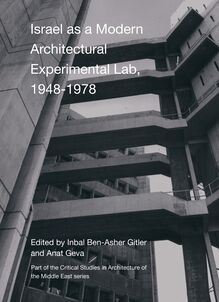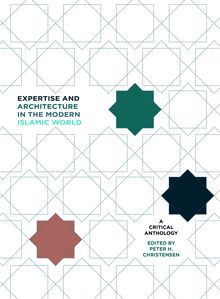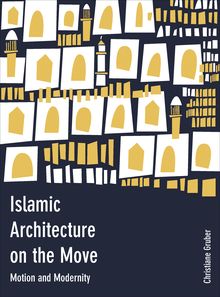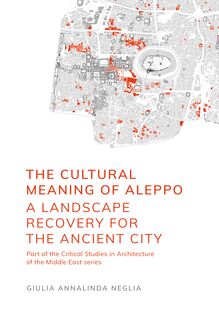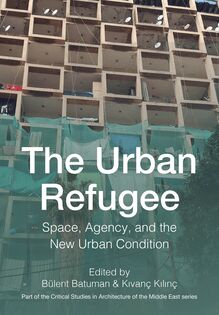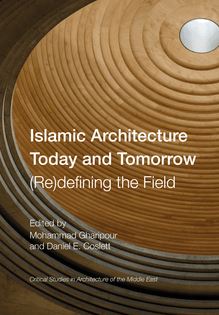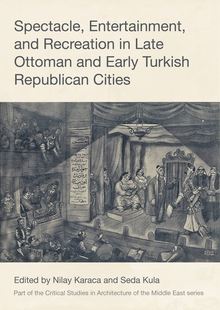-
 Univers
Univers
-
 Ebooks
Ebooks
-
 Livres audio
Livres audio
-
 Presse
Presse
-
 Podcasts
Podcasts
-
 BD
BD
-
 Documents
Documents
-
- Cours
- Révisions
- Ressources pédagogiques
- Sciences de l’éducation
- Manuels scolaires
- Langues
- Travaux de classe
- Annales de BEP
- Etudes supérieures
- Maternelle et primaire
- Fiches de lecture
- Orientation scolaire
- Méthodologie
- Corrigés de devoir
- Annales d’examens et concours
- Annales du bac
- Annales du brevet
- Rapports de stage
La lecture à portée de main
Vous pourrez modifier la taille du texte de cet ouvrage
Découvre YouScribe en t'inscrivant gratuitement
Je m'inscrisDécouvre YouScribe en t'inscrivant gratuitement
Je m'inscrisEn savoir plus
Vous pourrez modifier la taille du texte de cet ouvrage
En savoir plus

Description
In the aftermath of the deliberate destruction of cultural heritage pursued by Islamist groups like ISIS, many observers have erroneously come to associate Islamic doctrine and practice with such acts. This book explores the diverse ways Muslims have engaged with the material legacies of ancient and pre-Islamic societies, as well as how Islam’s own heritage has been framed and experienced over time.
This is a new collection of articles previously available in issues of the International Journal of Islamic Architecture.
The tragically familiar spectacles of cultural heritage destruction performed by the Islamic State group (ISIS) in Syria and Iraq are frequently presented as barbaric, baffling, and far outside the bounds of what are imagined to be normative, 'civilized' uses of the past. Often superficially explained as an attempt to stamp out idolatry or as a fundamentalist desire to revive and enforce a return to a purified monotheism, analysis of these spectacles of heritage violence posits two things: that there is, fact, an 'Islamic' manner of imagining the past – its architectural manifestations, its traces and localities – and that actions carried out at these localities, whether constructive or destructive, have moral or ethical consequences for Muslims and non-Muslims alike. In this reading, the iconoclastic actions of ISIS and similar groups, for example the Taliban or the Wahhabi monarchy in Saudi Arabia, are represented as one, albeit extreme, manifestation of an assumedly pervasive and historically on-going Islamic antipathy toward images and pre-contemporary holy localities in particular, and, more broadly, toward the idea of heritage and the uses to which it has been put by modern nationalism.
But long before the emergence of ISIS and other so-called Islamist iconoclasts, and perhaps as early as the rise of Islam itself, Muslims imagined Islamic and pre-Islamic antiquity and its localities in myriad ways: as sites of memory, spaces of healing, or places imbued with didactic, historical, and moral power. Ancient statuary were deployed as talismans, paintings were interpreted to foretell and reify the coming of Islam, and temples of ancient gods and churches devoted to holy saints were converted into mosques in ways that preserved their original meaning and, sometimes, even their architectural ornament and fabric. Often, such localities were valued simply as places that elicited a sense of awe and wonder, or of reflection on the present relevance of history and the greatness of past empires, a theme so prevalent it created distinct genres of Arabic and Persian literature (aja’ib, fada’il). Sites like Ctesiphon, the ancient capital of the Zoroastrian Sasanians, or the Temple Mount, where the Jewish temple had stood, were embraced by early companions of the Prophet Muhammad and incorporated into Islamic notions of the self. Furthermore, various Islamic interpretive communities as well as Jews and Christians often shared holy places and had similar haptic, sensorial, and ritual connections that enabled them to imagine place in similar ways. These engagements were often more dynamic and purposeful than conventional scholarly notions of 'influence' and 'transmission' can account for. And yet, Muslims also sometimes destroyed ancient places or powerfully reimagined them to serve their own purposes, as for example in the aftermath of the Crusader presence in the Holy Land or in the destruction, reuse and rebuilding of ancient Buddhist and Hindu sites in the Eastern Islamic lands and South Asia.
This volume presents thirteen essays by leading scholars that address the issue of Islamic interest in the material past of the ancient and Islamic world, with essays examining attitudes about antiquarianism in the Islamic world from medieval times to the present.
Main readership will be among scholars, graduate and undergraduate students, researchers, educators and academic libraries working or studying in the fields of the ancient world, antiquities, heritage and the Islamic world.
Introduction: Imagining Localities of Antiquity in Islamic Societies – Stephennie Mulder
PART 1: Imagining Antiquity in Medieval Islam
1. ‘Return to Origin Is Non-existence’: Al-Mada’in and Perceptions of Ruins in Abbasid Iraq – Sarah Cresap Johnson
2. Medieval Reports of the Preservation and Looting of Pre-Islamic Burials in South Arabia – Daniel Mahoney
3. The Wisdom to Wonder: Ajā’ib and the Pillars of Islamic India – Santhi Kavuri-Bauer
PART 2: Imagining Antiquity in Ottoman Lands
4. Explosions and Expulsions in Ottoman Athens: A Heritage Perspective on the Temple of Olympian Zeus – Elizabeth Cohen
5. Spoils for the New Pyrrhus: Alternative Claims to Antiquity in Ottoman Greece – Emily Neumeier
6. Claiming the Classical Past: Ottoman Archaeology at Lagina – Amanda Herring
PART 3: Imagining Antiquity in Modernity
7. Destruction as Layered Event: Twentieth Century Ruins in the Great Mosque of Gaza – Eli Osheroff and Dotan Halevy
8. In Situ: The Contraindications of World Heritage – Wendy M. K. Shaw
PART 4: Imagining Antiquity in the Contemporary World
9. The Masjid al-Haram: Balancing Tradition and Renewal at the Heart of Islam – Muhsin Lutfi Martens
10. ISIS’s Destruction of Mosul’s Historical Monuments: Between Media Spectacle and Religious Doctrine – Miroslav Melčák and Ondřej Beránek
11. The Radicalization of Heritage in Tunisia – Virginie Rey
12. Heritage Crusades: Saving the Past from the Commons – Ian B. Straughn
Notes on Contributors
Index
Sujets
Informations
| Publié par | Intellect Books |
| Date de parution | 13 juin 2022 |
| Nombre de lectures | 0 |
| EAN13 | 9781789385502 |
| Langue | English |
| Poids de l'ouvrage | 9 Mo |
Informations légales : prix de location à la page 0,4500€. Cette information est donnée uniquement à titre indicatif conformément à la législation en vigueur.
Extrait
Imagining Antiquity in Islamic Societies
Imagining Antiquity in Islamic Societies
Edited by Stephennie Mulder
Imagining Antiquity in Islamic Societies is the seventh book in the Critical Studies in Architecture of the Middle East series. The series is edited by Mohammad Gharipour (Morgan State University, Baltimore) and Christiane Gruber (University of Michigan, Ann Arbor).
Critical Studies in Architecture of the Middle East is devoted to the most recent scholarship concerning historic and contemporary architecture, landscape and urban design of the Middle East and of regions shaped by diasporic communities more globally. We invite interdisciplinary studies from diverse perspectives that address the visual characteristics of the built environment, ranging from architectural case studies to urban analysis.
First published in the UK in 2022 by
Intellect, The Mill, Parnall Road, Fishponds, Bristol, BS16 3JG, UK
First published in the USA in 2022 by
Intellect, The University of Chicago Press, 1427 E. 60th Street,
Chicago, IL 60637, USA
Copyright © 2022 Intellect Ltd
All rights reserved. No part of this publication may be reproduced, stored in a retrieval system or transmitted, in any form or by any means, electronic, mechanical, photocopying, recording or otherwise, without written permission.
A catalogue record for this book is available from the British Library.
Cover designer: Aleksandra Szumlas
Cover image credit: The entrance to the Mosque of Tadmur. From Views and Panoramas of Beirut and the Ruins of Palmyra (1865–67) by Louis Vignes, printed by Charles Nègre, Palmyra, Syria, albumen print. Getty Research Institute, Los Angeles (2015.R.15).
Production editor: Laura Christopher
Series: Critical Studies in Architecture of the Middle East
Series editors: Mohammad Gharipour and Christiane Gruber
Typesetting: NewgenKnowledge Works
Print ISBN: 978-1-78938-548-9
ePDF ISBN: 978-1-78938-549-6
ePUB ISBN: 978-1-78938-550-2
Series ISSN: 2059-3562
Printed and bound by Shortrun, UK.
Contents
Introduction: Imagining Localities of Antiquity in Islamic Societies
Stephennie Mulder
Part 1: Imagining Antiquity in Medieval Islam
1. ‘Return to Origin Is Non-existence’: Al-Mada’in and Perceptions of Ruins in Abbasid Iraq
Sarah Cresap Johnson
2. Medieval Reports of the Preservation and Looting of Pre-Islamic Burials in South Arabia
Daniel Mahoney
3. The Wisdom to Wonder: Ajā’ib and the Pillars of Islamic India
Santhi Kavuri-Bauer
Part 2: Imagining Antiquity in Ottoman Lands
4. Explosions and Expulsions in Ottoman Athens: A Heritage Perspective on the Temple of Olympian Zeus
Elizabeth Cohen
5. Spoils for the New Pyrrhus: Alternative Claims to Antiquity in Ottoman Greece
Emily Neumeier
6. Claiming the Classical Past: Ottoman Archaeology at Lagina
Amanda Herring
Part 3: Imagining Antiquity in Modernity
7. Destruction as Layered Event: Twentieth Century Ruins in the Great Mosque of Gaza
Eli Osheroff and Dotan Halevy
8. In Situ: The Contraindications of World Heritage
Wendy M. K. Shaw
Part 4: Imagining Antiquity in the Contemporary World
9. The Masjid al-Haram: Balancing Tradition and Renewal at the Heart of Islam
Muhsin Lutfi Martens
10. ISIS’s Destruction of Mosul’s Historical Monuments: Between Media Spectacle and Religious Doctrine
Miroslav Melčák and Ondřej Beránek
11. The Radicalization of Heritage in Tunisia
Virginie Rey
12. Heritage Crusades: Saving the Past from the Commons
Ian B. Straughn
Notes on Contributors
Index
Introduction: Imagining Localities of Antiquity in Islamic Societies
Stephennie Mulder
Imagining Antiquity at Palmyra
At the way stations
stay. Grieve over the ruins. Ask the meadow grounds,
now desolate, this question. Where are those we loved,
where have their dark-white camels gone? 1
Ibn ‘Arabi ( d. 1240)
T he publication of this edited volume comes as the Syrian war concludes its tenth gruelling year. With tens of millions dead or displaced, the war in Syria now ranks alongside the ongoing conflict in Yemen as among the worst human rights crises since World War II. Yet, among the countless tragic spectacles of human and heritage violence to emerge from this grim decade in Syria, few events focused the attention of the world in May of 2015 like the conquest of Palmyra by the so-called Islamic State (ISIS; also known as Da‘esh). Palmyra, an ancient city in the Syrian desert that grew prosperous on trade in the third century ce , is one of the most notable and visually magnificent sites of standing ruins from antiquity and Syria’s most famous archaeological site. In the early summer of 2015, as ISIS moved into the area around the ancient city, news reports breathlessly followed the advance of the militia. Desperate accounts of the hurried evacuations of both local residents and archaeological objects issued from the city, culminating in terrified dispatches from museum workers, many of whom spent nights in the museum in an attempt to safeguard the objects. One of these was the site director at Palmyra Dr Khaled al-As‘ad, a venerable academic specialist on the city who served at Palmyra for some forty years. His shocking death later that summer would again bring the ancient city into the headlines and underscore the dangers faced by Syrian archaeologists, many of whom, like Dr al-As‘ad, worked to protect museums and archaeological sites from the beginning of the conflict. 2 This volume, and the questions raised within it, are dedicated to the scholarship and personal integrity of Dr al-As‘ad.
Despite the global outcry, and in fact, because of it, ISIS proceeded to do as they had done at the museum in Mosul and at hundreds of other lesser-known churches, mosques and shrines in the areas under their control. 3 Between August and October of 2015, ISIS actors placed explosives in and around three of Palmyra’s most prominent monuments: the Temple of Baalshamin, the Temple of Bel, and the monumental Triumphal Arch that had formed the entrance to the city. The monuments’ destruction was performed before a captive global audience as it was rapidly disseminated in photographs and videos on YouTube and social media. 4 The unprecedented response to this highly mediatized performance treated it as an act of image-breaking. Yet the proliferation of media around it made it into an act of image-making. 5 Nearly every major newspaper in the world featured the destruction of Palmyra on its cover, with headlines in bold font declaring that civilization itself was under attack. Palmyra, prior to the war a site hardly known to the average person outside Syria, became a household name overnight. Its ancient, bracketed columns were suddenly synonymous not with the unique and local achievements of the Eastern Mediterranean world out of which they had arisen, but with the now-threatened triumph of Western European civilization itself. Specialists in Syrian history and archaeology, myself among them, found their previously obscure interest landing them as newly minted ‘experts’ on major news programmes, struggling with the ethical implications of our role in the media replication of these acts of destruction. 6
As the crisis unfolded, the media narrative was increasingly dominated by a dialectic of ‘civilized versus barbaric’ encounters with antiquity; in the popular imagination, ISIS came to embody something prototypically ‘Islamic’ about the relationship between the world’s Muslims and the past. This popular notion was reinforced by a pattern of uncritical media repetition of ISIS’s own explanations for their actions. With some exceptions, news media tended to follow the interpretive lead of ISIS’s Twitter posts, YouTube videos, and articles published in their glossy recruitment magazine Dabiq as though they were legitimate sources on Islamic belief and practice, instead of the complex, carefully-orchestrated, propagandistic media products of hypermodern criminal actors. Tending to take the words directly from ISIS’s mouth, news sources reported the destruction as a characteristically ‘Islamic’ attempt to stamp out idolatry, or as the expression of a fundamentalist desire to revive and enforce a return to a purified monotheism.
Yet, these same media accounts paid little attention to the simple question of how the monuments in question had been sustained and preserved during the more than 1,400 years of Islamic presence and governance in the region before the arrival of ISIS. Instead, a Western narrative about the inevitability of Islamic iconoclasm came to bear on sites of antiquity in Syria, a view initially established following the Taliban’s destruction of the Bamiyan Buddhas in 2001 and further developed and reinforced during the Jyllands-Posten cartoon controversy in 2005 and the Charlie Hebdo massacre in 2015. 7
The narrative recounted above is well known to many. Yet, hidden within the monumental embrace of the Temple of Bel’s fortified temenos is another history of destruction, though it is rarely framed as such. 8 This is the story of the French creation of Palmyra as a heritage locale, which took place nearly a century prior to ISIS’s performative encounter with the site. Here, instead of adherents to a fringe sect of Islam, the protagonists were members of the Service des Antiquités de Syrie et du Liban (the French Antiquities Service), established shortly after the declaration of the French Mandate in Syria in 1920. Their objective was, to their mind, noble: the restoration of Palmyra to its ancient state and the ostensible conservation and preservation of the site. Beginning in 1929, French archaeologists, working under the direction of Henri Seyrig, laid out an ambitious programme of restoration. Their efforts included the consolidation of the site, and the restoration of the interior cella of the famous temple, which had been dedicated to the ancient triad of deities worshipped at Palmyra. They also strengthened the entrance portal to
-
 Univers
Univers
-
 Ebooks
Ebooks
-
 Livres audio
Livres audio
-
 Presse
Presse
-
 Podcasts
Podcasts
-
 BD
BD
-
 Documents
Documents
-
Jeunesse
-
Littérature
-
Ressources professionnelles
-
Santé et bien-être
-
Savoirs
-
Education
-
Loisirs et hobbies
-
Art, musique et cinéma
-
Actualité et débat de société
-
Jeunesse
-
Littérature
-
Ressources professionnelles
-
Santé et bien-être
-
Savoirs
-
Education
-
Loisirs et hobbies
-
Art, musique et cinéma
-
Actualité et débat de société
-
Actualités
-
Lifestyle
-
Presse jeunesse
-
Presse professionnelle
-
Pratique
-
Presse sportive
-
Presse internationale
-
Culture & Médias
-
Action et Aventures
-
Science-fiction et Fantasy
-
Société
-
Jeunesse
-
Littérature
-
Ressources professionnelles
-
Santé et bien-être
-
Savoirs
-
Education
-
Loisirs et hobbies
-
Art, musique et cinéma
-
Actualité et débat de société
- Cours
- Révisions
- Ressources pédagogiques
- Sciences de l’éducation
- Manuels scolaires
- Langues
- Travaux de classe
- Annales de BEP
- Etudes supérieures
- Maternelle et primaire
- Fiches de lecture
- Orientation scolaire
- Méthodologie
- Corrigés de devoir
- Annales d’examens et concours
- Annales du bac
- Annales du brevet
- Rapports de stage
